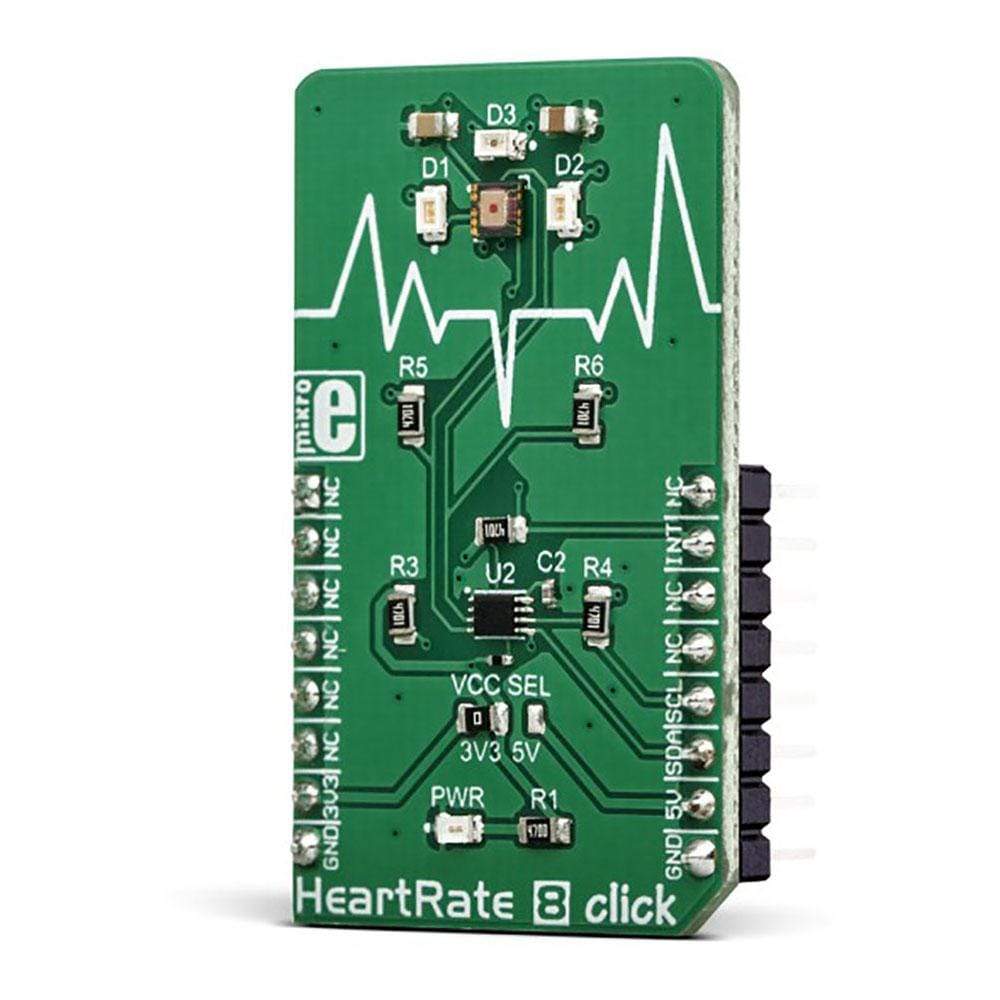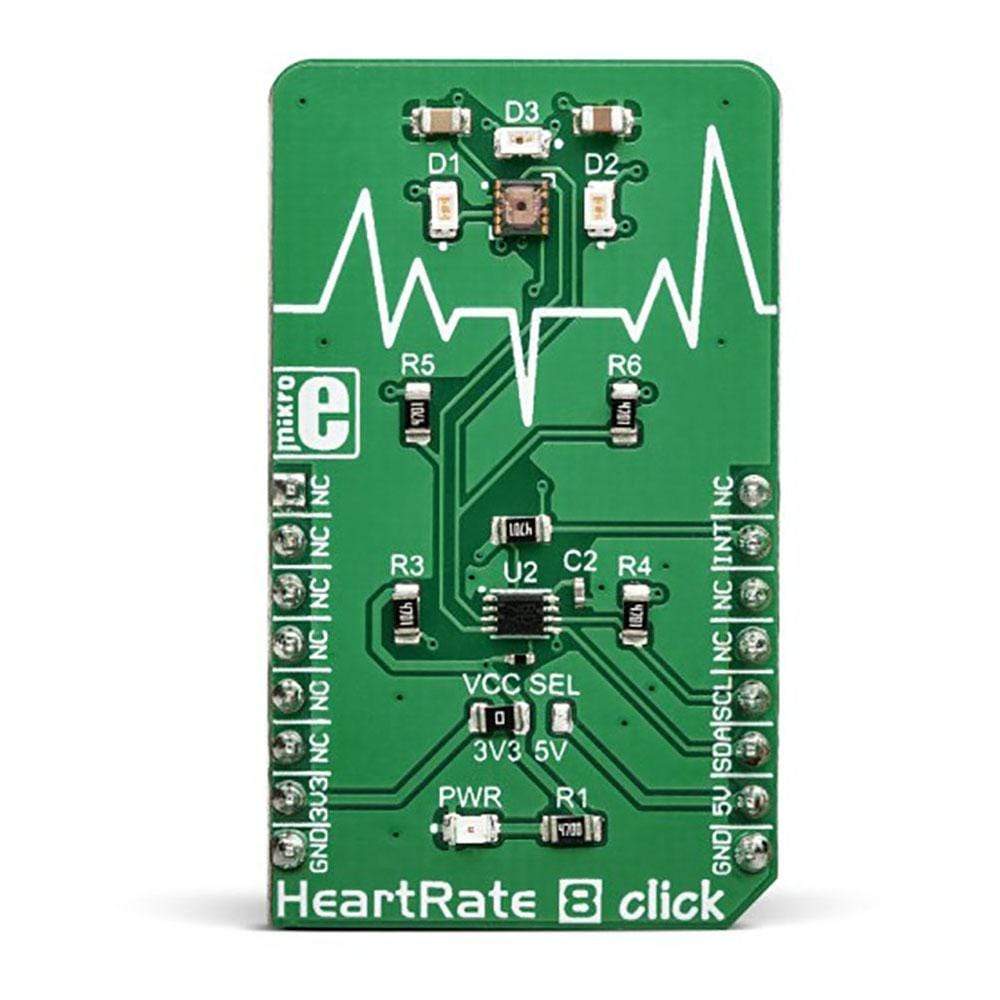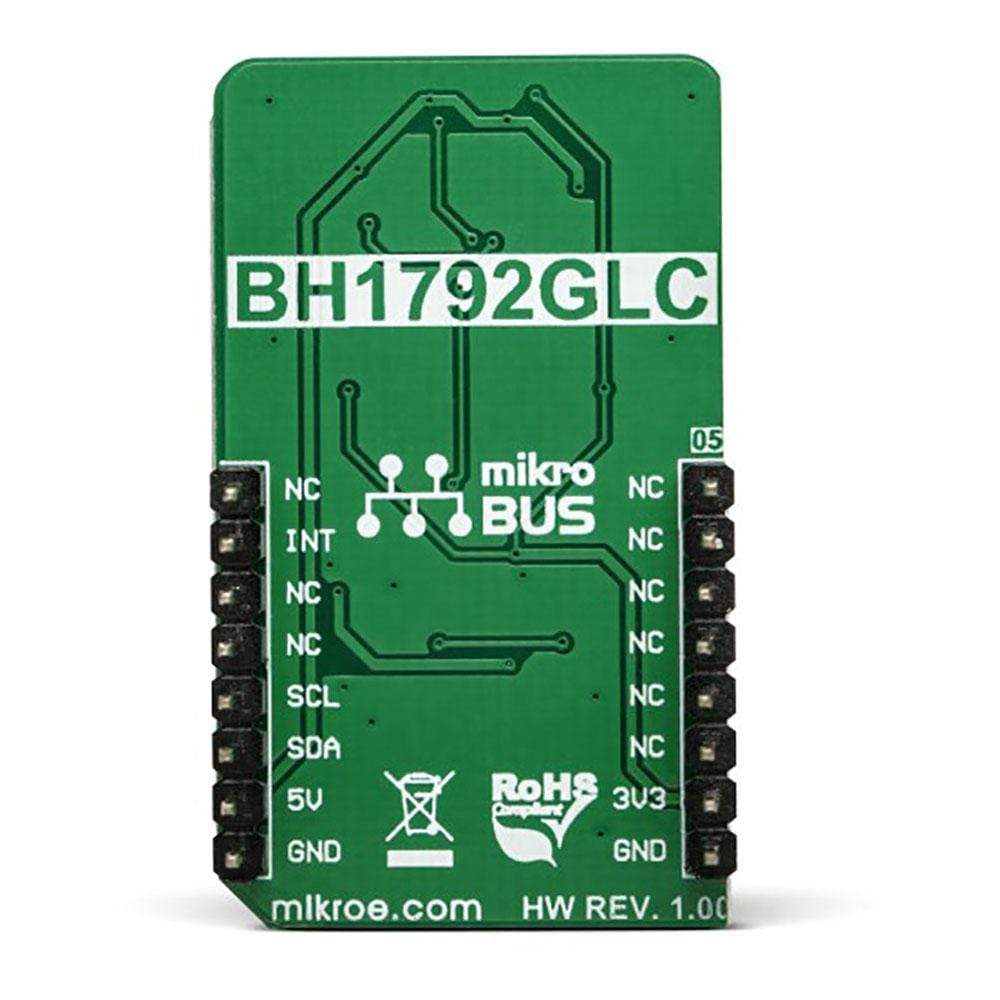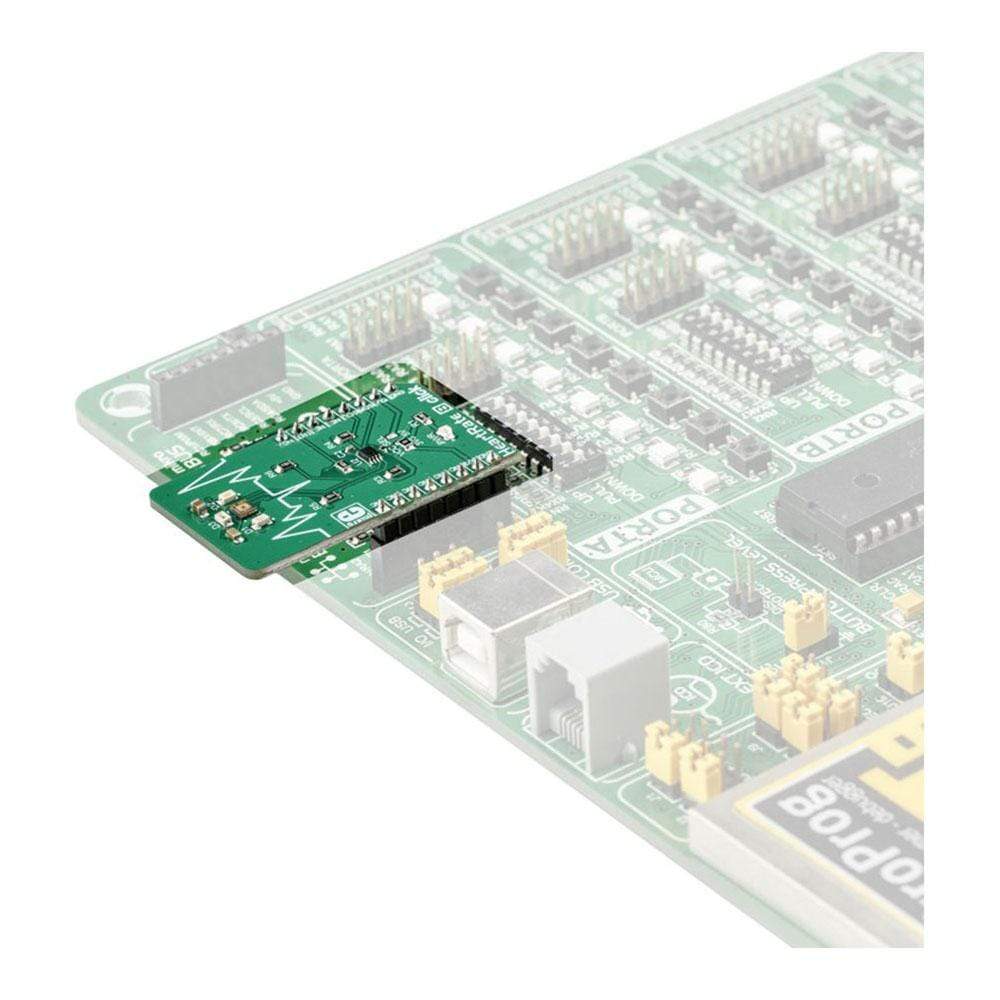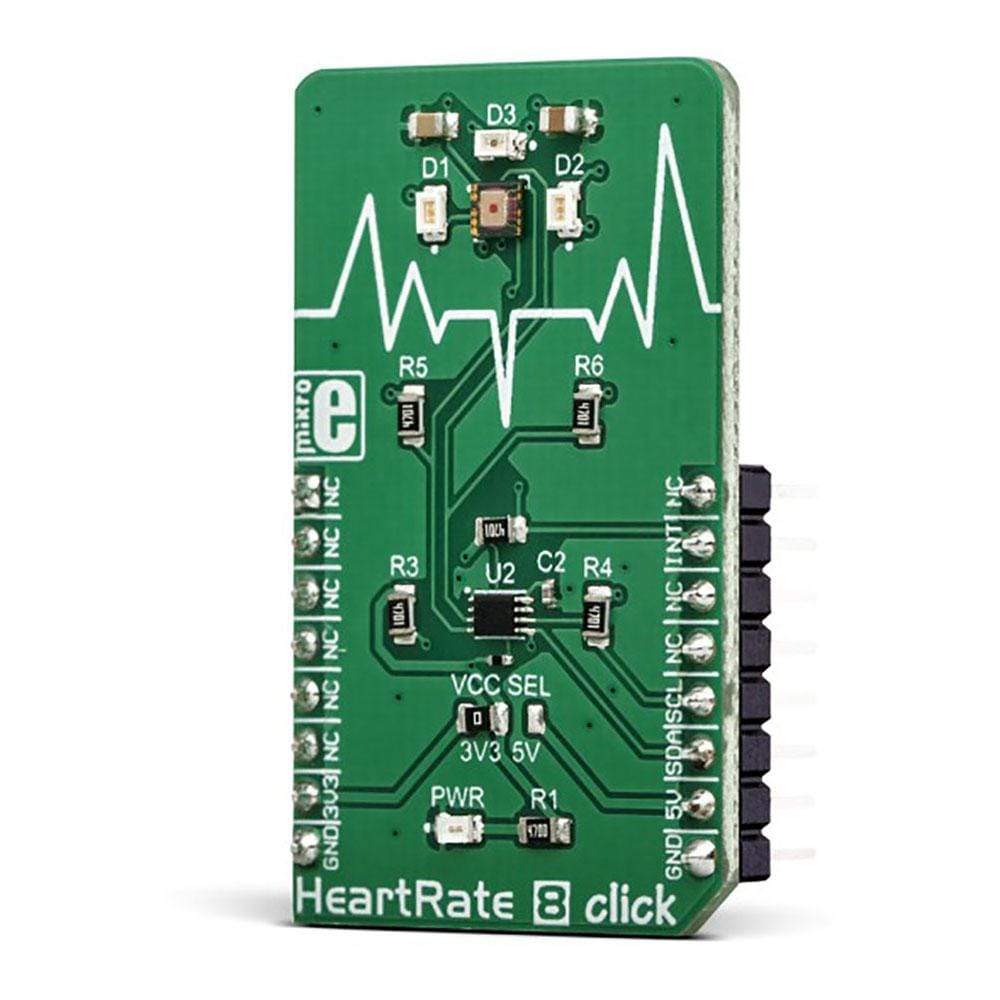

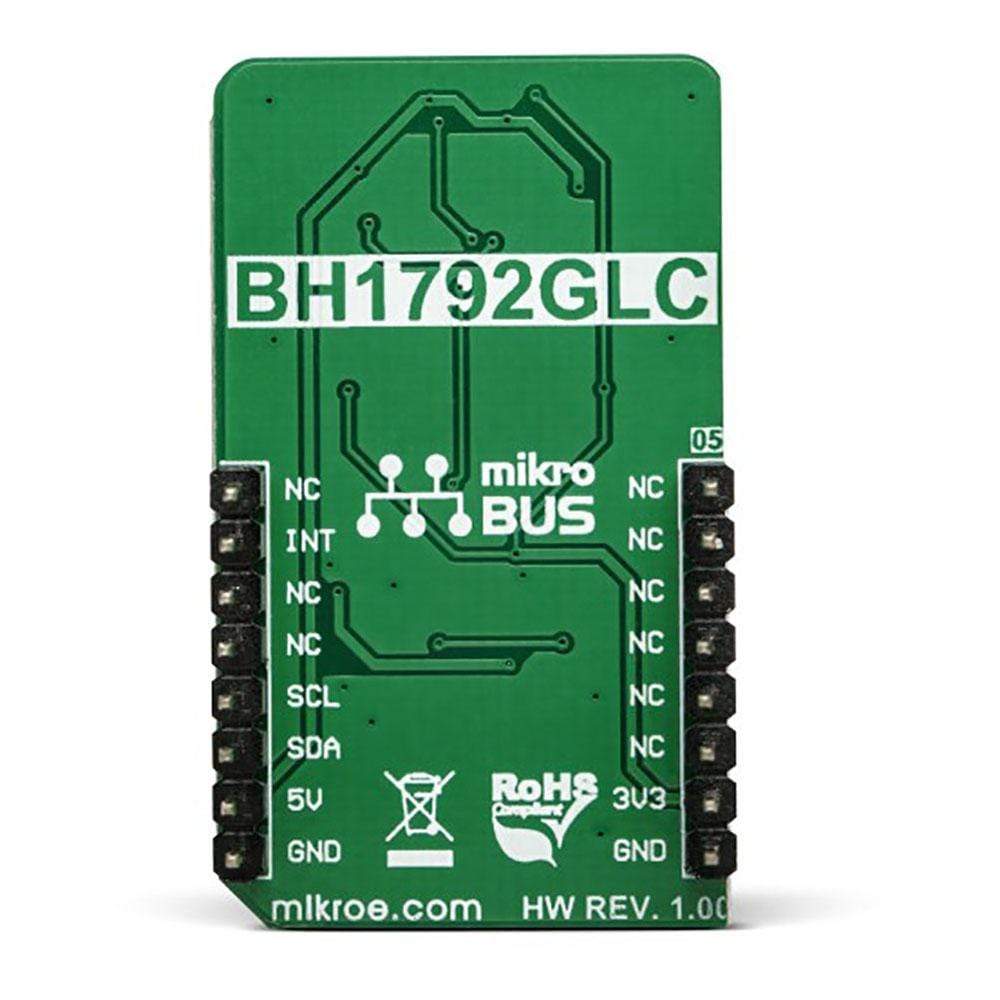
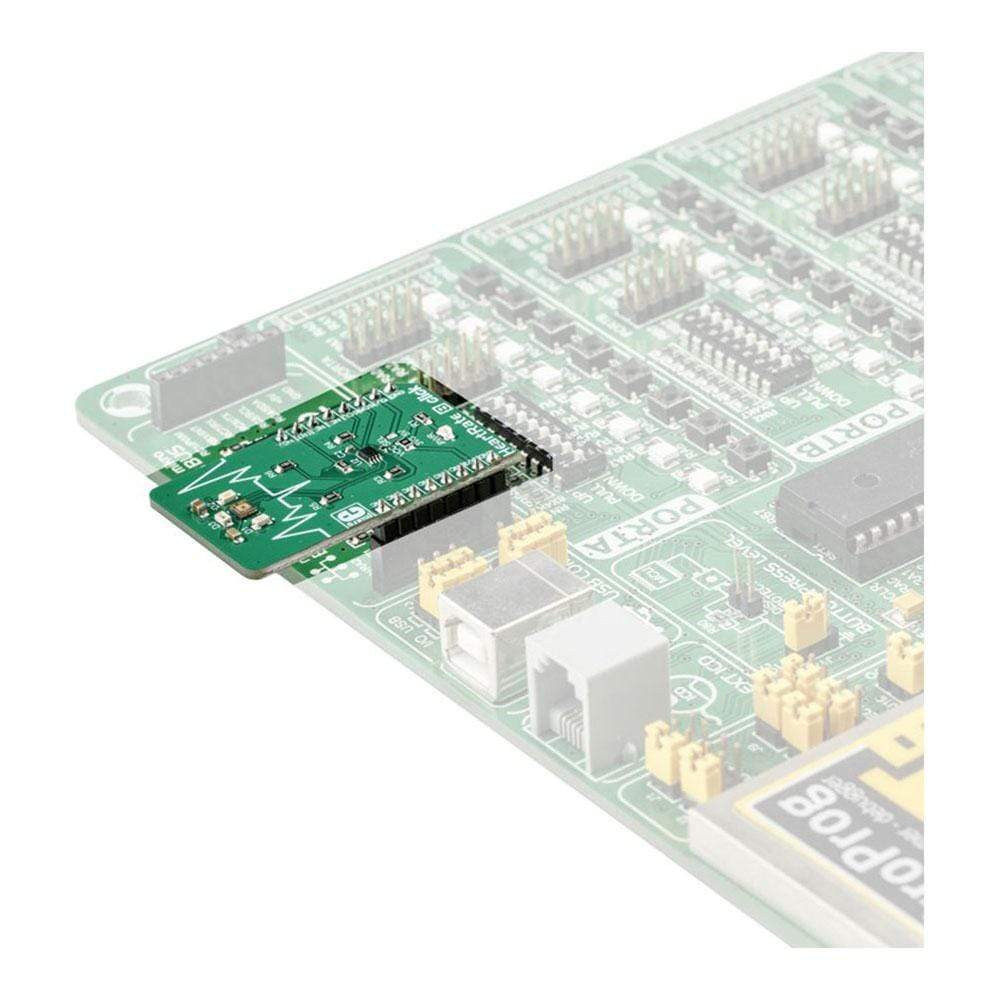
Overview
The Heart Rate 8 Click Board™ is an optical biosensor, designed for heart-rate monitoring (HRM). This Click Board™ employs a specialised sensor that incorporates three LED drivers and two photo-sensing elements, sensitive to green and IR light. The green light is most commonly used to measure the dilatation of the blood vessels; therefore, the Heart Rate 8 Click Board™ is equipped with two green LEDs, which are driven by the BH1792GLC, a monolithic integrated sensor for heart rate monitoring, and the additional IR LED, used to detect a finger touch. The Heart Rate 8 Click Board™ is a perfect solution for the development of various wearable health-related devices, smartphones, tablets, and similar space-constrained applications.
It comes in a package that also includes the mikroSDK software and a library with all the functions. The Click Board™ comes as a fully tested and approved prototype, making it a reliable device ready to use on the development board.
Downloads
Le Heart Rate 8 Click Board™ est un biocapteur optique conçu pour la surveillance de la fréquence cardiaque (HRM). Ce Click Board™ utilise un capteur spécialisé qui intègre trois pilotes LED et deux éléments photo-détecteurs, sensibles à la lumière verte et IR. La lumière verte est le plus souvent utilisée pour mesurer la dilatation des vaisseaux sanguins ; par conséquent, le Heart Rate 8 Click Board™ est équipé de deux LED vertes, qui sont alimentées par le BH1792GLC, un capteur intégré monolithique pour la surveillance de la fréquence cardiaque, et la LED IR supplémentaire, utilisée pour détecter le toucher du doigt. Le Heart Rate 8 Click Board™ est une solution parfaite pour le développement de divers appareils portables liés à la santé, smartphones, tablettes et autres applications similaires à espace restreint.
Il est livré dans un package comprenant également le logiciel mikroSDK et une bibliothèque avec toutes les fonctions. Le Click Board™ est livré sous la forme d'un prototype entièrement testé et approuvé, ce qui en fait un appareil fiable prêt à être utilisé sur la carte de développement.
| General Information | |
|---|---|
Part Number (SKU) |
MIKROE-3218
|
Manufacturer |
|
| Physical and Mechanical | |
Weight |
0.019 kg
|
| Other | |
Country of Origin |
|
HS Code Customs Tariff code
|
|
EAN |
8606018713745
|
Warranty |
|
Frequently Asked Questions
Have a Question?
Be the first to ask a question about this.

